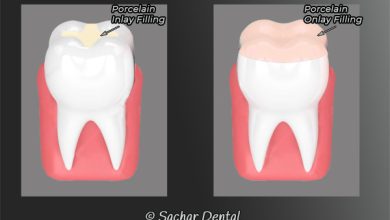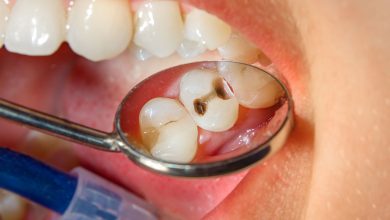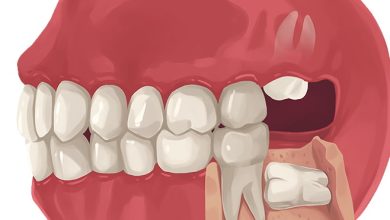How to Stop Tooth Root Decay? 10 Powerful Strategies
To stop tooth root decay, proper oral hygiene and regular dental check-ups are essential. Neglecting oral hygiene results in the gradual buildup of plaque on teeth, leading to decay and eventually reaching the tooth roots.
Tooth root decay is a common dental problem that can lead to severe pain, infection, and even tooth loss if not addressed promptly. Fortunately, there are proactive steps you can take to prevent tooth root decay and maintain good oral health.
This article will explore the causes of root decay, risk factors involved, and effective preventive measures to help you combat this condition. By following these guidelines, you can ensure that your teeth and gums stay healthy and free from decay. So, let’s dive deeper into this important topic and learn how to stop tooth root decay.
What Is Tooth Root Decay?
Tooth root decay refers to the erosion and decay of the roots of your teeth. While commonly associated with decay on the tooth surface, tooth root decay affects the roots beneath your gumline. This type of decay occurs when bacteria in your mouth produce acids that eat away at the tooth’s protective enamel and dentin, exposing the sensitive root.
Tooth root decay is a serious concern because it can lead to various dental issues. When left untreated, it can cause pain, sensitivity, and discomfort. The exposed root can also become infected, resulting in gum disease and potentially leading to tooth loss.
| Signs of Tooth Root Decay | Preventive Measures |
|---|---|
| – Increased tooth sensitivity | – Practice good oral hygiene |
| – Pain while chewing | – Limit acid and sugary foods |
| – Gum recession | – Use fluoride toothpaste |
| – Persistent bad breath | – Regular dental check-ups |
It’s essential to address tooth root decay promptly to prevent further damage. By taking preventative measures and maintaining good oral hygiene practices, you can significantly reduce the risk of tooth root decay and enjoy a healthier, more vibrant smile.
Causes Of Tooth Root Decay
Tooth root decay, also known as root caries, is a common dental problem that can lead to severe pain and tooth loss if left untreated. There are several causes of tooth root decay that individuals should be aware of in order to prevent and address the issue effectively.
Poor oral hygiene practices: Neglecting proper oral hygiene, such as regular brushing and flossing, can increase the risk of tooth root decay. Plaque and bacteria can accumulate around the gum line and erode the tooth roots.
Excessive consumption of sugary and acidic foods: Frequent intake of sugary and acidic foods and beverages can contribute to tooth root decay. These substances can erode the protective enamel layer and weaken the roots, making them more susceptible to decay.
Age-related factors: As we age, our gum tissues tend to recede, exposing the tooth roots. This increases the vulnerability to root decay. Additionally, older individuals may experience decreased saliva production, which plays a crucial role in neutralizing acid and protecting the teeth.
Medications and medical conditions: Certain medications and medical conditions can affect oral health and increase the risk of tooth root decay. For instance, medications that cause dry mouth or conditions such as diabetes can compromise oral health and contribute to decay.
| Causes of Tooth Root Decay |
|---|
| Poor oral hygiene practices |
| Excessive consumption of sugary and acidic foods |
| Age-related factors |
| Medications and medical conditions |
Maintain A Consistent Oral Hygiene Routine
Maintaining a consistent oral hygiene routine is essential in stopping tooth root decay. The brushing technique and frequency play a crucial role in preventing decay. It is recommended to brush at least twice a day for two minutes each time using a soft-bristled toothbrush and fluoride toothpaste. Make sure to use gentle, circular motions and clean all surfaces of the teeth, including the inner and outer surfaces as well as the chewing surfaces.
Flossing should not be overlooked as it removes plaque and debris from between the teeth and along the gumline. It is necessary to floss at least once a day using a gentle sawing motion and making sure to reach all areas. After brushing and flossing, rinsing with a fluoride mouthwash helps to strengthen enamel and protect against decay. Additionally, do not skip regular dental check-ups, which allow for early detection and treatment of any potential issues. By following these practices consistently, you can effectively prevent tooth root decay and maintain optimal oral health.
Follow A Balanced Diet For Healthy Teeth
It is important to follow a balanced diet to prevent tooth root decay. One of the key aspects of a healthy diet for teeth is limiting the consumption of sugary and acidic foods. These types of foods can contribute to tooth decay and erosion. Instead, focus on incorporating teeth-friendly foods and beverages into your diet. Foods high in calcium and vitamin D are particularly important for maintaining strong and healthy teeth. Calcium helps to strengthen tooth enamel, while vitamin D aids in the absorption of calcium. Some examples of calcium-rich foods include dairy products, leafy greens, and almonds. Additionally, it is beneficial to include foods high in vitamin D, such as fatty fish and fortified dairy products. By making these dietary changes, you can take proactive steps to prevent tooth root decay and promote overall dental health.
Practice Good Habits For Oral Health
Practicing good habits for oral health is essential in preventing tooth root decay. One important habit to adopt is avoiding tobacco products and excessive alcohol consumption, as they can have detrimental effects on oral health. Limiting snacking between meals is also crucial, as frequent snacking can lead to increased exposure to sugars and acids, which can contribute to tooth decay. Additionally, drinking plenty of water helps to wash away food particles and maintain adequate saliva production, which is important for neutralizing acids in the mouth. Chewing sugar-free gum can also stimulate saliva production and help to clean the teeth. By implementing these habits, you can significantly reduce the risk of tooth root decay and maintain a healthy smile.
Use Protective Measures For Tooth Root Decay Prevention
Tooth root decay can be prevented by taking certain protective measures. One effective method is the use of dental sealants. These are thin, plastic coatings that are applied to the chewing surfaces of the back teeth, where decay often begins. Sealants act as a barrier, protecting the enamel from plaque and acid attacks. Another preventive measure is fluoride treatments. Fluoride helps strengthen tooth enamel, making it more resistant to decay. It can be applied as a gel, foam, or varnish by your dentist. Additionally, using a desensitizing toothpaste for exposed roots can help reduce sensitivity and prevent root decay. These toothpastes contain ingredients that block the tubules in the dentin, reducing the transmission of pain signals. By incorporating these protective measures into your oral care routine, you can effectively prevent tooth root decay and maintain a healthy smile.
Address Underlying Dental Issues Promptly
If you want to stop tooth root decay, it is important to address underlying dental issues promptly.
Treating gum disease and tooth decay:
- Regular dental check-ups and cleanings can help detect and treat gum disease and tooth decay at an early stage.
- Brushing your teeth at least twice a day and flossing daily can prevent plaque buildup, which can lead to gum disease and tooth decay.
- Using fluoride toothpaste and mouthwash can strengthen your tooth enamel and protect against decay.
- Eating a healthy diet, low in sugary and acidic foods and beverages, can reduce the risk of tooth decay.
Correcting misaligned teeth and bite issues:
- Orthodontic treatments, such as braces or clear aligners, can help correct misaligned teeth and bite issues that may contribute to tooth root decay.
- By aligning teeth properly, it becomes easier to maintain good oral hygiene and prevent tooth decay.
- Consulting with an orthodontist can help determine the best treatment options for your specific needs.
By taking proactive steps to address underlying dental issues, such as gum disease and tooth decay, and correcting misaligned teeth and bite issues, you can effectively stop tooth root decay and maintain optimal dental health.
Manage Dry Mouth Effectively
Introduction: Tooth root decay can be a serious dental issue that needs to be addressed promptly. One way to manage this is by effectively dealing with dry mouth, which is a common contributing factor. Causes and preventive measures: Dry mouth can be caused by factors such as certain medications, medical conditions like Sjogren’s syndrome, or lifestyle choices like smoking. To prevent dry mouth, it’s essential to stay hydrated, avoid caffeine and alcohol, and maintain good oral hygiene. Importance of maintaining saliva flow: Saliva plays a crucial role in maintaining oral health as it helps in washing away food particles and neutralizing acids. Adequate saliva flow prevents tooth decay and reduces the risk of root caries. Tips to alleviate dry mouth symptoms: – Sip water throughout the day to keep your mouth moist. – Use sugar-free gum or candies to stimulate saliva production. – Opt for alcohol-free mouth rinses and toothpaste formulated for dry mouth. – Consider using a humidifier in your bedroom to add moisture to the air. – Consult your dentist for additional treatments like salivary gland stimulation. By effectively managing dry mouth, you can reduce the risk of tooth root decay and maintain a healthy smile.Opt For Fluoride Products And Treatments
Fluoride is a highly effective tool in preventing tooth root decay. Its benefits for tooth root protection include strengthening the enamel, reducing the risk of cavities, and reversing early signs of decay. There are various fluoride products and treatments available that can aid in preventing tooth root decay.
Types Of Fluoride Products And Their Usage:
| Product | Usage |
|---|---|
| Toothpaste | Brushing with fluoride toothpaste at least twice a day |
| Mouthwash | Rinsing with fluoride mouthwash daily |
| Fluoride gels | Applying directly to the teeth and leaving it on for several minutes |
| Fluoride treatments | In-office treatments applied by a dental professional |
| Fluoride varnishes | Applied to the teeth and left on for several hours |
It is important to consult with a dentist to determine the most suitable fluoride products and treatments for your specific needs. Regular use of fluoride products as recommended can significantly contribute to the prevention of tooth root decay and ensure optimal oral health.
Consider Dental Restoration Options
To stop tooth root decay, there are several dental restoration options to explore. Two common options are dental fillings and crowns, each with its own benefits and considerations. Dental fillings are often used for small to moderate tooth decay. They involve removing the decayed portion of the tooth and filling it with a material like composite resin or amalgam. Fillings restore the tooth’s function and prevent further decay.
Crowns are a more extensive restoration option for severely decayed or damaged teeth. They involve covering the entire tooth with a custom-made cap to provide strength and protection. Crowns can be made from various materials, such as metal, porcelain, or a combination of both. They are durable and long-lasting, restoring the tooth’s appearance and function.
In more severe cases of tooth root decay, root canal therapy may be necessary. This procedure involves removing infected pulp from the tooth’s root canal and sealing it to prevent further infection. Root canal therapy saves the natural tooth and alleviates pain.
In situations where tooth extraction is necessary due to extensive decay, dental implants and bridges offer replacement options. Dental implants are artificial tooth roots that are surgically placed into the jawbone and topped with a crown. Bridges, on the other hand, consist of one or more artificial teeth anchored to adjacent natural teeth for support.
Teach And Encourage Good Oral Hygiene Practices
Teaching and encouraging good oral hygiene practices is essential to stop tooth root decay. Spreading awareness about the importance of oral health is crucial in promoting healthy habits among children. Here are some tips for promoting oral health:
- Lead by example: Show children the importance of brushing and flossing regularly by practicing good oral hygiene yourself.
- Make it fun: Use colorful toothbrushes and flavored toothpaste to make brushing time enjoyable for children.
- Establish a routine: Set specific times for brushing and flossing to ensure consistency and make it a habit.
- Explain the benefits: Teach children about the importance of oral hygiene and the potential consequences of neglecting it, such as tooth decay and gum disease.
- Regular dental check-ups: Schedule regular dental visits to prevent and detect any potential oral health issues.
By following these tips, you can help children develop good oral hygiene habits early on and prevent tooth root decay. Spread awareness and make oral health a priority!

Credit: www.interdent.com
Regularly Monitor And Maintain Oral Health
To prevent tooth root decay, it is crucial to regularly monitor and maintain oral health. Consistent follow-up ensures the effectiveness of oral care practices. Here are a few tips for maintaining good oral health long-term:
- Brush twice a day with a fluoride toothpaste to remove plaque and prevent decay.
- Floss daily to remove food particles and plaque from between teeth.
- Use an antimicrobial mouthwash to reduce bacteria and protect against gum disease.
- Limit sugary and acidic foods and drinks that can erode tooth enamel.
- Visit a dentist every six months for professional cleanings and check-ups.
- Consider dental sealants to protect vulnerable areas from decay.
- Avoid smoking and tobacco use, which can increase the risk of gum disease and tooth decay.
- Stay hydrated to maintain saliva flow, which helps neutralize acid and wash away bacteria.
- Address any dental issues promptly, such as tooth sensitivity or gum bleeding.
- Maintain a balanced diet that includes plenty of fruits, vegetables, and calcium-rich foods for strong teeth and gums.
By following these tips and maintaining good oral hygiene practices consistently, you can stop tooth root decay and promote optimal oral health.
Frequently Asked Questions On How To Stop Tooth Root Decay?
Can A Tooth With Root Decay Be Saved?
Yes, a tooth with root decay can be saved with timely treatment from a dentist. Contact your dentist to discuss options for saving your tooth.
Can Tooth Root Decay Reversed?
Tooth root decay cannot be reversed once it starts. It is important to take preventive measures like maintaining good oral hygiene and visiting a dentist regularly to avoid tooth decay.
Why Is The Root Of My Tooth Decaying?
The root of your tooth decays due to bacterial infection spreading from the tooth’s surface to the root.
How Do You Fix Root Decay?
To fix root decay, consult a dentist who will determine the appropriate treatment, such as a deep cleaning or root canal therapy, to remove the decayed tissue and restore the tooth’s health. Early detection and regular dental check-ups can prevent root decay.
Conclusion
To prevent tooth root decay and maintain good oral health, it is essential to follow a few key practices. By adopting a regular dental hygiene routine, including brushing twice a day and flossing daily, you can effectively remove plaque and tartar buildup.
Additionally, consuming a balanced diet and limiting sugary foods and drinks can help prevent tooth decay. Seeking regular dental check-ups and professional cleanings will also aid in early detection and treatment of any potential tooth decay concerns. Remember, taking proactive steps towards oral health will lead to a lifetime of healthy smiles.





